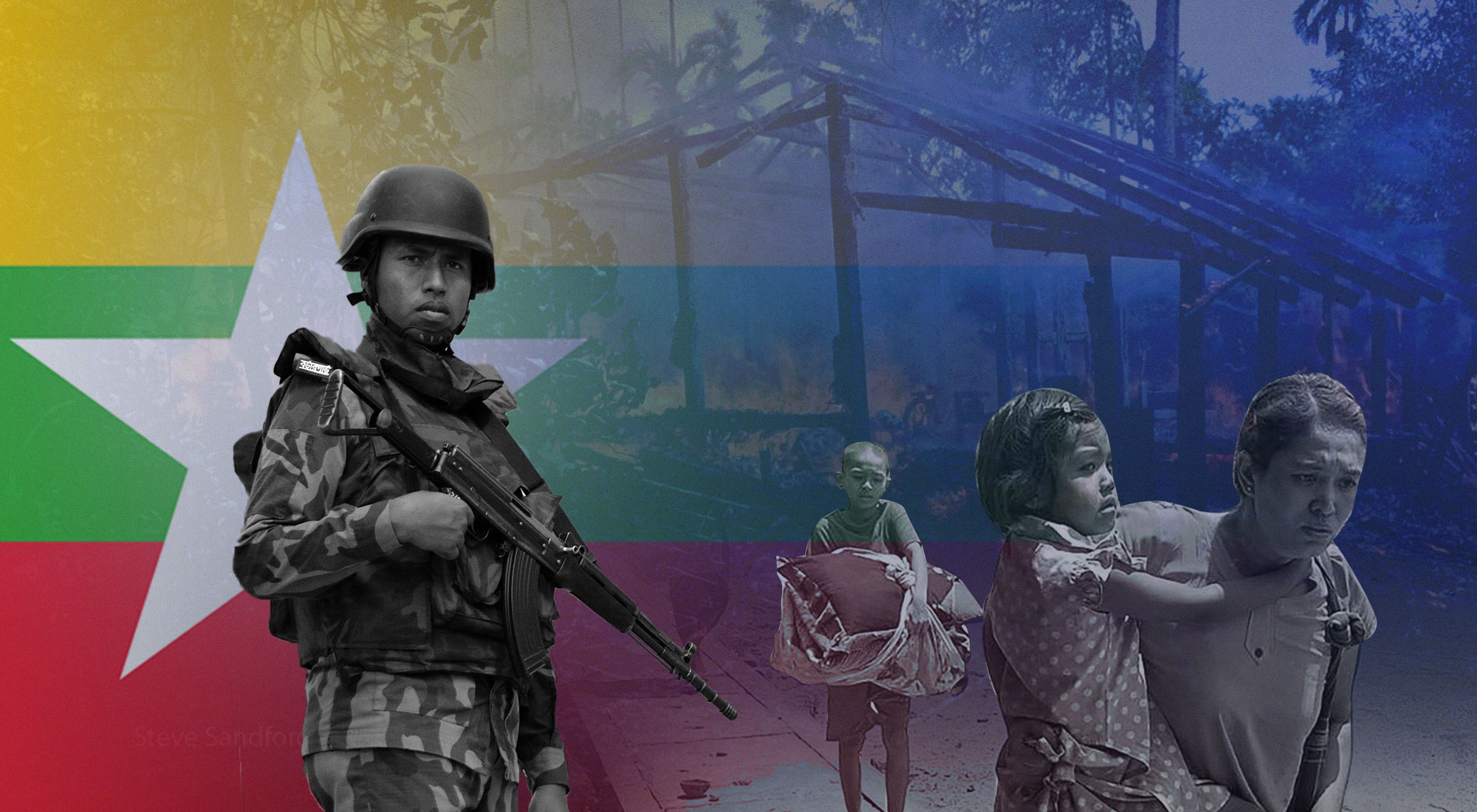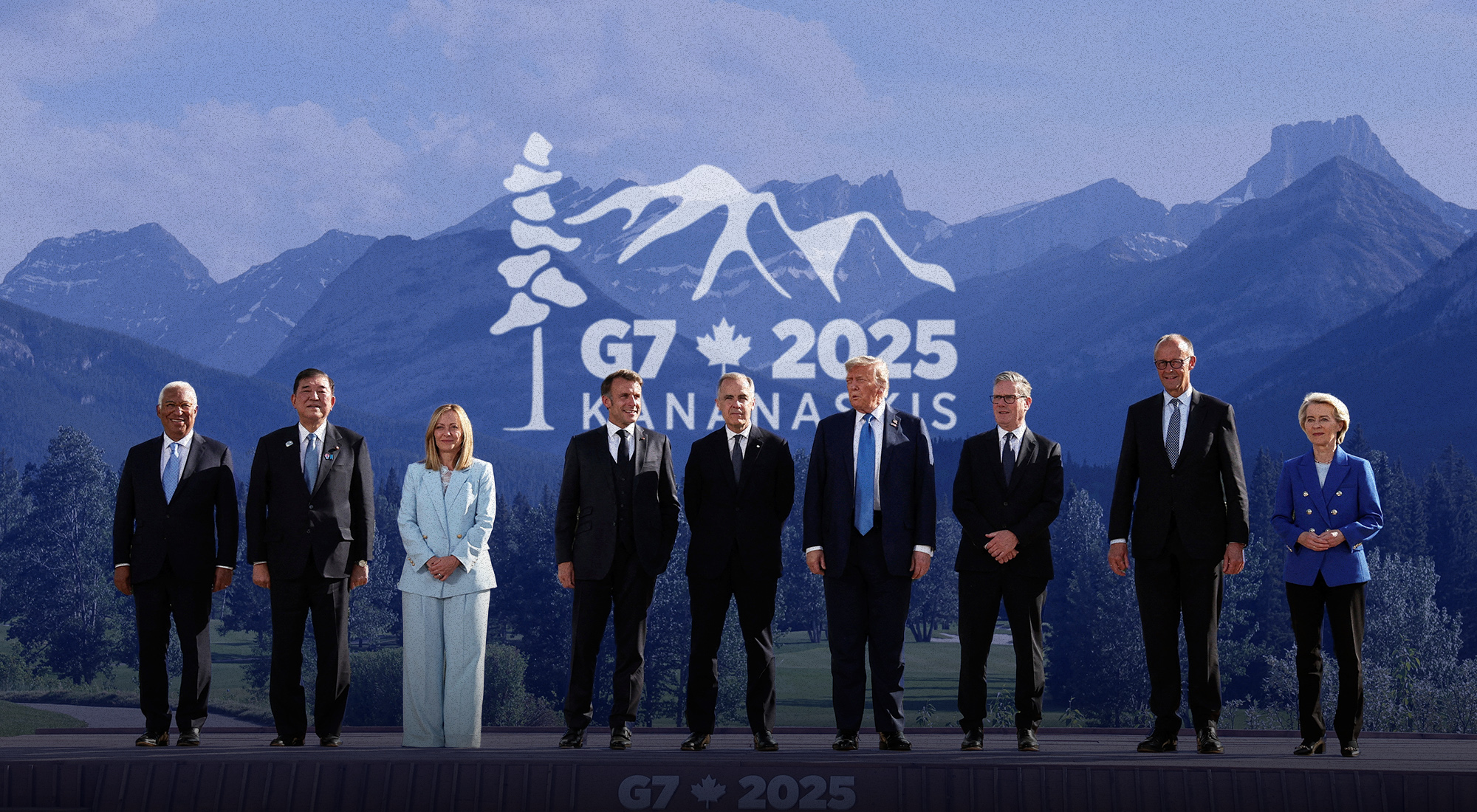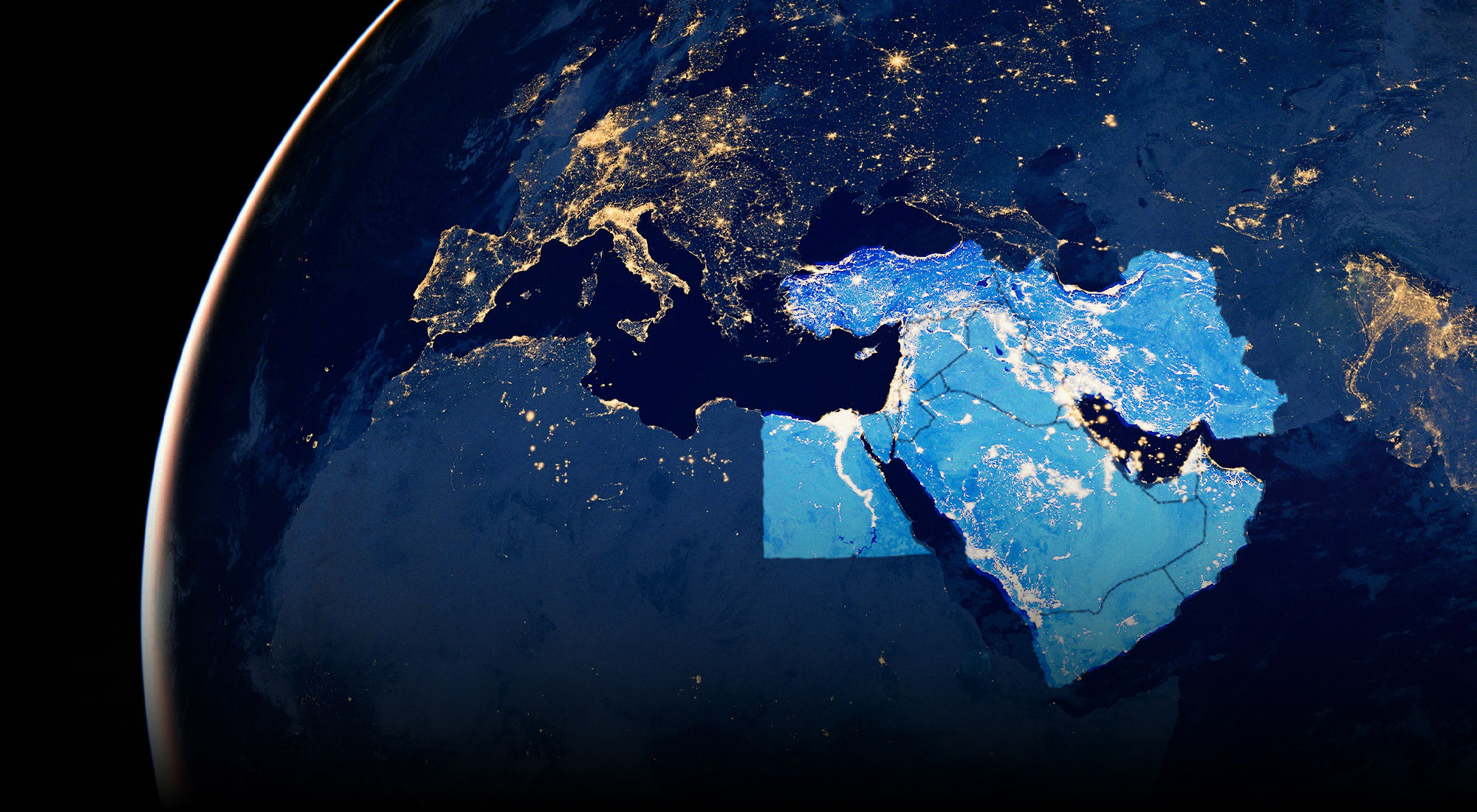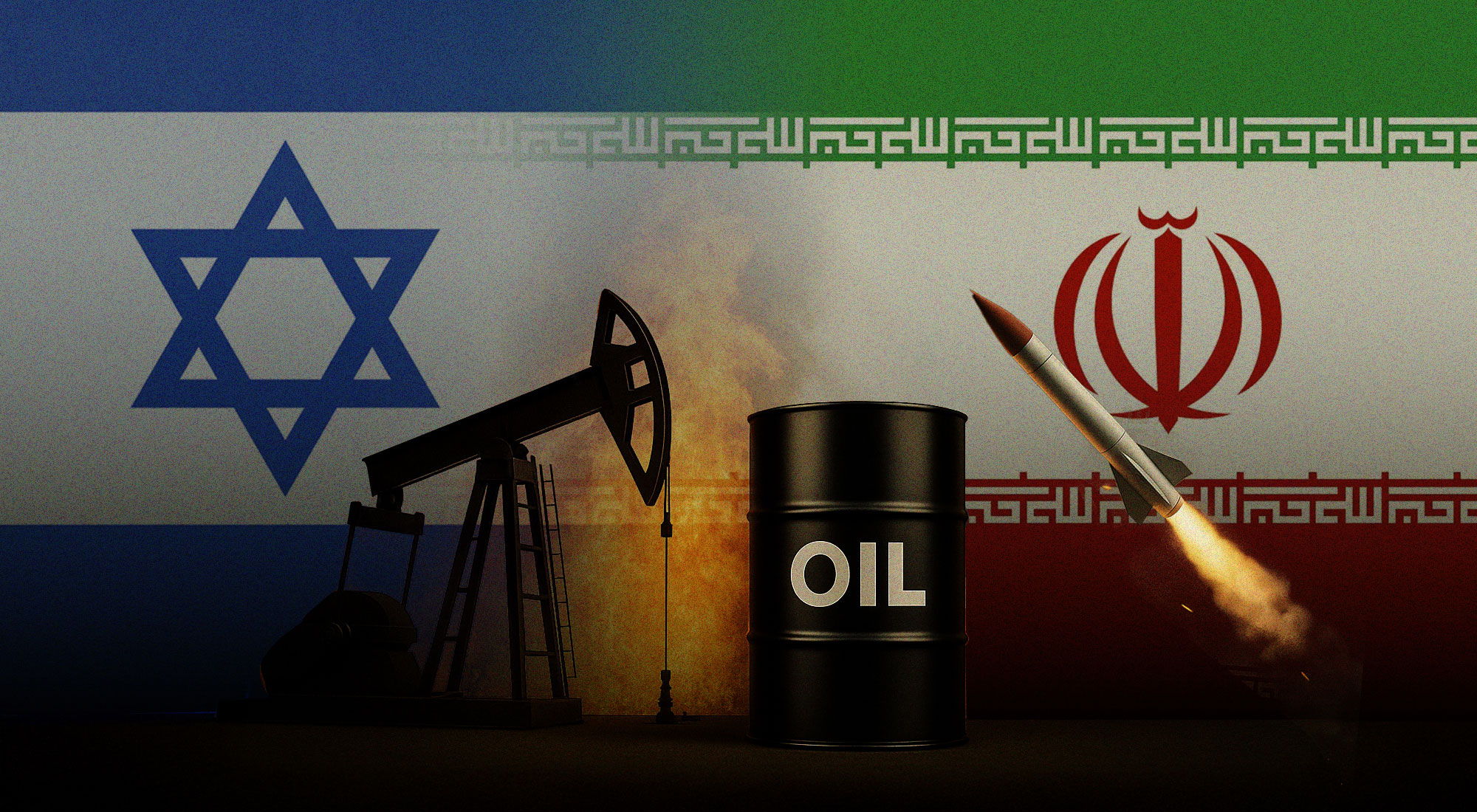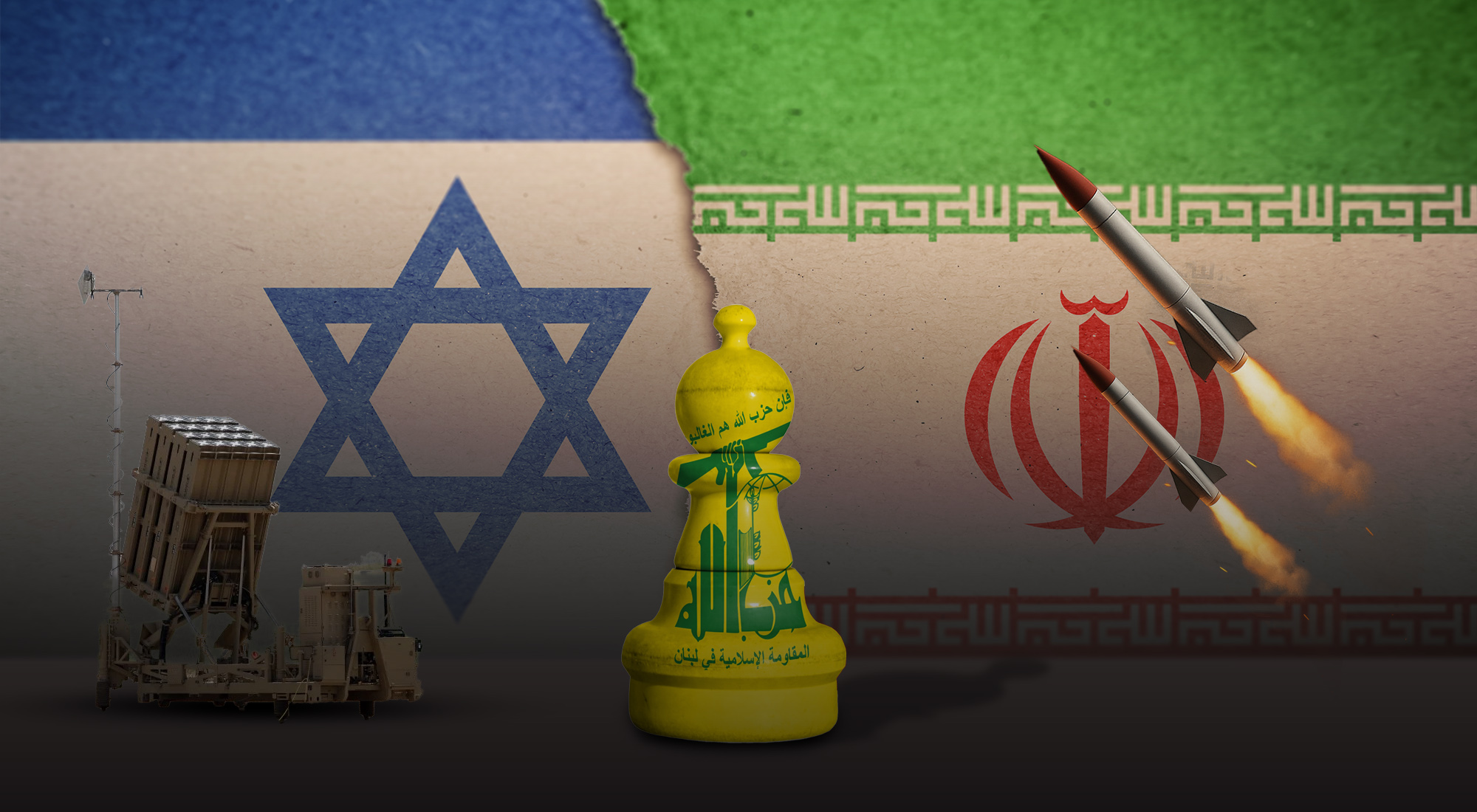The Republic of Myanmar (Burma) is a predominantly Buddhist Southeast Asian country with a rich tapestry of ethnicities. The Government of Myanmar (GoM) officially recognizes up to 135 indigenous ethnic groups under the 1982 Citizenship Act, with one notable exception. The Rohingya, a Muslim minority group, possess a unique cultural and historical background in Myanmar, dating back centuries. Despite this, they have been referred to as “the most persecuted minority in the world” by the United Nations (UN) [1] due to their exclusion from the 1982 Citizenship Act, which has led to their current statelessness. [2]
This article aims to shed light on the plight of the Rohingya, who are currently living as undocumented aliens in Myanmar. It will provide a historical overview of the events that led to their statelessness, including the role of the GoM and the Buddhist Nationalist Party. It will also discuss the current struggles and challenges the Rohingya face and the implications of nationalism and its various theories. Lastly, it will highlight the ongoing international court case, which has garnered significant global attention and is a crucial step toward addressing the Rohingya crisis and providing possible lasting solutions.
1. Timeline of Events
The historical roots of the Rohingya in Arakan (Rakhine) have often been a topic of controversy. One belief is that Muslims first reached Arakan in the 8th century, and through a gradual expansion process in the 15th and 16th centuries, a distinct Arakanese Muslim community was formed. An opposing view, supported by the GoM, contends that the Muslims of the Rakhine State are descendants of Bengali migrants from the Chittagong area of Bangladesh who migrated in the 15th and 16th centuries. [3]
1.1 Colonial Era (1824-1948)
The British occupation of Burma had a significant impact on a strong nationalist response to the foreign domination of that time, which has firmly influenced contemporary Myanmar in many ways, such as ethnoreligious relationships and their marginalization of ethnic minority groups. [4] From 1826 onwards, the British occupation brought South Asians into Burma as laborers, traders, and administrators, thus creating an initial resentment within the Burmese nationalists against South Asians in general. [5] This resentment would carry on to modern times, as the main narrative is that the Muslim and Hindu presence in Burma originated from the British, who allowed them in as cheap laborers, which stoked widespread hostility and sparked violent riots in 1938. [6]
The Japanese invasion of Burma during World War II intensified tensions between the Burmans and many minorities, causing Buddhist nationalists to back the Japanese. In contrast, several minority groups, such as the Rohingya, supported the British occupation. The British occupation promised the Rohingya a “Muslim territory within Arakan” in exchange for their allegiance, which they never received. [7] The Burmese perceived the Rohingya as threats trying to propagate anti-Burman sentiment and nationalism with their demand to establish a separate Muslim state. [8]
1.2 Socialist Republic (1962-2010)
The Union of Burma was established on 4 January 1948, after gaining independence from British rule. During the U Nu government, a Citizenship Act was passed in 1948, which indirectly acknowledged the Rohingya as an indigenous race based on the requirement that two generations had lived in Myanmar before them. However, the Rohingya Muslims were stigmatized by the government after the 1962 coup. [Ibid]
The post-independence civilian government, marked by a poor democratic framework, underwent a substantial transition following a coup on 2 March 1962. General Ne Win and the Burmese Socialist Party took control, starting an extensive nationalization program that impacted every aspect of the country’s economy and society. [9] During this period, a Buddhist-Burmese nationalist identity emerged under military rule, which discriminated against other races and religious faiths, with several policies and operations carried out to deprive the Rohingya of their civil, political, economic, and social human rights. [10]
Under the Ne Win regime, military actions against the Rohingya—Operation Naga Min (Dragon King) in 1978 and Operation Pyi Thaya (Operation Clean and Beautiful Nation) in 1991—were among the first of several operations to force the Rohingya out of the state. [11] Furthermore, the discriminatory Citizenship Act of 1982 is often seen as the cause of the Rohingya’s current ostracization, limiting their access to education, medical treatment, and job opportunities. [12] With deep roots in Burmese history, a strained relationship was formed between the Rohingya and Burmans, fueling a destructive cycle of hostility to this day. [13]
1.3 Rise of Anti-Rohingya Sentiment (2011-2015)
Since the 2011 political reforms, existing sectarian violence between Buddhists and Muslims reached new heights in Rakhine State when Buddhist Rakhine clashed with Rohingya Muslims during the June 2012 riots. [14] The religious conflict led to the rise of several Buddhist nationalist groups, particularly the rising influence of the 969 movement and the MaBaTha (Association for the Protection of Race and Religion). [15] These nationalist movements played a crucial role in painting the narrative that the Rohingya are illegal immigrants trying to transform Buddhist Myanmar into a Muslim nation. [16] The employment of false narratives by Buddhist nationalists was observed once more during the unrest in 2012–2013 when accusations of Muslims threatening to disinherit their Buddhist wives and their children unless they converted to Islam were made. [17]
On 21 August 2015, a joint parliament approved the Religious Conversion Bill and Monogamy Bill, which would violate internationally protected rights to privacy and religious beliefs, as the bill aimed to limit any potential growth of the Muslim population. [18] The 2015 electoral victory of the National League for Democracy (NLD), led by Nobel laureate Aung San Suu Kyi, was a breath of hope for democracy in Myanmar. However, these expectations fell short as she failed to address the discriminatory 1982 Citizenship Act and 2015 “Race and Religion laws.” [Ibid]
2. Current Situation
The 2017 attacks have brought forth one of the most egregious cases of forced displacement in modern times. On 25 August 2017, the Arakan Rohingya Salvation Army (ARSA) launched coordinated attacks on police posts and army bases in Rakhine State. [19] The Tatmadaw (Myanmar Military) responded by launching “clearance operations” targeting ARSA for these attacks and the October 2016 attacks. The United Nations officials, including the Secretary-General and the High Commissioner for Human Rights, have described the actions against the Rohingya as “ethnic cleansing” and crimes against humanity. [20] Subsequent reports have confirmed these findings and called for accountability for the atrocities, including genocide. The international community has widely criticized the GoM for these breaches of human rights, as several hundred thousand Rohingya have been forcibly uprooted from their homes. The destruction of Rohingya communities through forced relocation of their inhabitants has violated the international law prohibiting forced relocation and the right to one’s residence. [21]
2.1 Refugee Crisis
Since the forced displacement in 2017, the Government of Bangladesh (GoB), a non-signatory of the 1951 Refugee Convention or its 1967 protocol, has estimated that around 970,000 Rohingya refugees are currently in Cox’s Bazar region of Bangladesh. [22] The refugees face overcrowded camps, restricted access to necessities, and persistent insecurity, and recent reports highlight the daily threats from ARSA and Rohingya Solidarity Organization (RSO) members, including extortion, abduction, and involvement in trafficking schemes. [23] The crisis remains severe despite international aid, with humanitarian agencies struggling to meet the population’s growing needs.
Since the establishment of Bangladesh in 1971, the nation has been hosting the first wave of Rohingya refugees escaping the military operations during the 1970s, continuing until March 2019, when the GoB informed the UN Security Council that it would stop accepting any more refugees fleeing from Myanmar. [24] In April 1992, Myanmar and Bangladesh signed a settlement for the repartition of the Rohingya people. [25] However, the current junta has been ignoring Bangladesh’s calls for repatriation, seemingly seeking to forget the Rohingya issue altogether. [26] It is safe to assume Bangladesh cannot support this large number of populations for long, as the local people are eventually going to run out of patience, and the Rohingya will try to live free outside of their camp in search of a better life. [27]
2.2 Civil War
In February 2021, the quasi-democracy led by the NLD would fall, as the Tatmadaw staged a coup to restore military rule in Myanmar. [28] Since the coup, Myanmar has been the sole Asian nation with an extreme level of internal violence owing to its “fragmented” state due to hundreds of small ethnic armed organizations being formed to contest the junta. [29] The armed clashes between the Tatmadaw and rebel groups like the Arakan Army (AA) have led to widespread food insecurity, economic stagnation, and displacement within Rakhine State. [30]
In late May 2024, the UN gathered testimonies from witnesses regarding the crimes committed by the AA in Rohingya settlements. The report indicated the withdrawal of the Tatmadaw from key Rakhine townships and the advancement of the AA into these settlements. [31] The Rohingya harbor significant mistrust toward the AA, in part due to the religious divide in the Rakhine. Furthermore, the forced conscription of Rohingya men by the AA was documented, as they were sent to the frontline after a few days of training, effectively using them as cannon fodder. [32]
On 27 July 2024, ASEAN foreign ministers and top diplomats from the United States, China, and Russia met in Laos’ capital to address the civil war in Myanmar, among other regional concerns. [33] Since the coup in 2021, ASEAN has failed to carry out its five-point consensus, which encompassed an immediate end to violence, dialogue among all parties, the appointment of the special envoy, humanitarian assistance by ASEAN, and the special envoy’s visit to Myanmar to meet with all parties. [34] As the junta continues to ignore the plan, it has raised doubts about the bloc’s effectiveness and credibility in promoting peace.
3. Implications of Nationalism
In Myanmar, a primordial anti-Muslim narrative has been an essential tool in strengthening the Buddhist nationalist identity. Nationalism has no one meaning and has had numerous evolving definitions. Ben-Israel defines it as “the sum of collective mental attitudes that are formed and expressed through action.” [35] Using this definition can help us better understand the actions, consistent conflicts, and assertion of citizenship in Myanmar.
The atrocities that took place in 2017 showed a lackluster response from the government and were all the result of state-centric policies that led to the displacement of people, armed conflicts, and dire humanitarian situations. The GoM has culturally and historically entrenched this strong nationalism by linking Buddhist heritage, beliefs, national identity, and rhetoric to play central roles in the hostility toward the Rohingya community and wide national acceptance by the Burmese majority. [36] The extreme nationalism that is practiced in Myanmar has always served “us” at the expense of “others.” To legitimize their actions to remove “the existential threat” to the Burmese way of life and the Burmese people, it has built and portrayed the Rohingya as the “others.” [37]
In Rakhine, the Buddhist nationalist movements—the 969 movement and MaBaTha—have significantly exacerbated the anti-Muslim rhetoric and general bias for the Rohingya Muslims. Notorious monks, such as Ashin Wirathu of the 969 movement, played an extremist role in influencing continuous anti-Muslim rhetoric during the 2012 sectarian violence by capitalizing on the Buddhist “Western Gate” belief, which characterizes the Muslims as spearheading an initial Islamist drive to change the Rakhine State, ultimately changing Myanmar from a Buddhist nation to an Islamic state, playing on historical Buddhist narratives. [38]
The practice of “political Buddhism” by these nationalist groups continues to create identity crisis, violence, and divisiveness within Myanmar through the implementation of robust anti-Muslim narratives that seek to drive out the Rohingya community from Myanmar. [39] Discriminatory legislation such as the 1982 Citizenship Act and the 2015 Race and Religious laws implemented by the GoM have inherently caused this Muslim minority to lose their identity, reflecting the role of Buddhist nationalism in constitutional and legal arrangements, as well as their role in the national political and social ethos. [40]
3.1 Schools of Nationalism
The concept of nationalism, as with other theories, has given way to nationalist schools of theory. Nationalism in Myanmar is often viewed from a primordial perspective, defined as a fixed and unchanging ethnic identity. [41] In this case, the Buddhist nationalist party, with its ethnic and religious identity as Burmese, opposes the Rohingya Muslims. Once these identities are constructed, cultural assimilation can be deemed impossible due to strong ethnic ties and views about kinship, culture, and beliefs, among other factors. [42] These primal values are essential components of contemporary Burmese nationalism [43]; an important factor is belonging to an indigenous or ethnic group that inhabited Burma before colonization in 1823, which the government claims is the basis for citizenship.
An opposing view would analyze Burmese nationalism through the instrumentalist perspective, emphasizing that ethnicity and nationalism are not given but are socially and politically constructed to manipulate the masses. Such “imagined communities” would take actions that would benefit the elites, both economically and politically, and allow them control over the general population by centralizing the state through a single national identity. [44] In simpler terms, Buddhist monks in parliament and nationalist groups employed ethnicity and nationalism indirectly to wage and construct rooted, biased resentment toward the Rohingya population by portraying them as illegal settlers in Burma. Benedict Anderson’s perspective [45] portrays nations as socially constructed and imagined by people who distinguish themselves as part of the collective. Thus, nations and nationalism are viewed as by-products of modernity and were developed as mechanisms for achieving political and economic goals, which can be applied to the movement of Burmese nationalism.
4. ICJ Involvement
The Gambia vs. Myanmar marks the first time a purportedly non-injured state—in this instance, a state that did not assert an injury or interest beyond being a party to the Genocide Convention—had been brought to the International Court of Justice (ICJ). [46]
On 11 November 2019, The Gambia, on behalf of 57 members of the Organisation of Islamic Cooperation (OIC), filed a case at the ICJ, alleging that Myanmar intended to ethnically cleanse the Rohingya Muslims in Rakhine State, thus violating Article 9 of the Convention on the Prevention and Punishment of the Crime of Genocide of 1978. [47] The Gambia requested provisional measures to prevent further acts of genocide, which the ICJ accepted on 23 January 2020. [48]
In December 2019, then-State Counsellor Aung San Suu Kyi rejected the genocide allegations at the ICJ, claiming that the exodus of hundreds of thousands of people was due to the violence they were fleeing, not the actions of Myanmar’s military. She maintained that the security forces were responding to attacks by Rohingya terrorists. [49] This stance drew sharp criticism from the international community, which questioned how a Nobel Peace Prize laureate and democratic leader could deny the ongoing genocide in her country. [50]
The ICJ case became more complicated following the military coup in February 2021, which deposed Suu Kyi and sentenced her to up to 150 years in prison. The military junta, led by General Min Aung Hlaing, sought to have their delegates recognized by the ICJ. Meanwhile, the National Unity Government (NUG), comprising members of the ousted civilian government, represented Myanmar in the proceedings, advising the country to accept the court’s jurisdiction and retract its previous objections. [51]
In July 2022, the ICJ rejected Myanmar’s preliminary objections, including those questioning The Gambia’s standing and the court’s jurisdiction. [52] Myanmar was instructed to respond to The Gambia’s claims by 24 May 2023, though this deadline was extended to 24 August 2023, upon Myanmar’s request. The ICJ subsequently ordered The Gambia to file its reply to Myanmar’s arguments by 16 May 2024, with Myanmar required to submit a rejoinder by 16 December 2024. [53]
5. Policy Suggestions
The continued displacement and lack of citizenship rights owing to the implementation of the 1982 Citizenship Act by the Socialist Republic of the time have complicated efforts to find long-lasting solutions for the Rohingya refugees. A current hope lies with the ICJ case, as the outcome of the ruling could lead to a shift or potentially end the identity crisis surrounding the Rohingya people. However, as demonstrated, approaching the issue from a legal perspective is time-consuming. It would not provide an immediate solution for the people, as the case has been ongoing since 2019 and does not appear close to delivering a verdict. [Ibid]
Bangladesh and Myanmar’s efforts to repatriate seemed promising. However, given Myanmar’s current wartime conditions and the 1982 Citizenship Act, repatriation appears unlikely without a significant change to state policies. [54] Additionally, voluntary repatriation does not seem possible due to the demands of the Rohingya, which list 13 demands, some of which include citizenship, equal rights, and justice being brought against the perpetrators through the involvement of international organizations such as the UN Security Council and International Criminal Court. [55] Since 2021, efforts have been made by the UNHCR through the implementation of the Joint Response Plan to achieve five strategic objectives, which include repatriation efforts, protection of the Rohingya, delivering humanitarian assistance, fostering the well-being of Rohingya communities, and strengthening disaster responses. [56]
With the ongoing conflict in Myanmar, implementing possible solutions would have to happen in the event that a regime change takes place. According to the latest reports in July 2024, the Tatmadaw has been experiencing continuous setbacks due to increased military pressure from opposition forces, leading to the loss of territory and high-ranking officials. [57] The resounding defeats of the Tatmadaw on the battlefield could lead to various potential outcomes. Such defeats could lead us to hypothesize scenarios, including a negotiated settlement between the Tatmadaw and ethnic armed organizations (EAOs), a second military coup, or the complete collapse of the current junta. If that happens, the NUG, primarily composed of deposed elected officials, could seize its opportunity and pave the way for a return to civilian government. However, the NUG’s position toward the Rohingya has been questionable. Although they have appointed a Rohingya activist, Aung Kyaw Moe, as their deputy minister of human rights, their actions seem to be more of a show to secure international support and recognition for their cause. The future of the Rohingya in Myanmar remains uncertain, with ongoing violence and mistrust toward various armed groups adding to the complexity of the situation. [58]
Thus, the Rohingya crisis requires a comprehensive and coordinated approach. First, the government, international organizations, and NGOs must be involved in addressing the ongoing internal conflict and ensuring the establishment of a democratic system. This approach should include immediate humanitarian relief and implementing long-term strategies to address the roots of the cause, particularly altering the policies of the 1982 Citizenship Act or abolishing it altogether.
Conclusion
The future of the Rohingya community remains vague. As we slowly approach the 7th anniversary of the 2017 attacks, this article sought to provide an insightful overview of the ongoing Rohingya plight in 2024. The Rohingya crisis remains a humanitarian issue of utmost importance. Rooted in a complex history of colonial legacy, ethno-religious conflicts, and discriminatory state policies, the plight of the Rohingya has been marked by systematic persecution, forced displacement, and statelessness.
There are currently no signs pointing to the safe return of the Rohingya people, given the current political turmoil afflicting Myanmar. The aforementioned setbacks faced by the Tatmadaw could potentially result in a window for the NUG to step up and assume control, as intervention by the international community is crucial to ensuring the establishment of a legitimate democratic system to safeguard the reintegration of the Rohingya. However, the current socio-political landscape in Myanmar may make an immediate solution unattainable, as the crisis has evolved into a regional issue, particularly the conflict between Buddhist and Muslim nationalists across South Asia.
Nonetheless, the future of the Rohingya ultimately lies with the abolishment of the 1982 Act to end the deeply ingrained discriminatory policies toward the Rohingya minority, which have ostracized them in society, politics, and government.
References
[1] “Emergencies | Rohingya Refugee Crisis,” UNHCR, June 2023, https://www.unrefugees.org/emergencies/rohingya-refugee-crisis/.
[2] Abdelkader, Engy, “Myanmar’s democracy Struggle: The impact of communal violence upon Rohingya women and youth,” Pacific Rim Law & Policy Journal (2014), https://papers.ssrn.com/sol3/papers.cfm?abstract_id=2404956.
[3] Mohajan, Haradhan Kumar, “History of Rakhine State and the origin of the Rohingya Muslims.” IKAT The Indonesian Journal of Southeast Asian Studies 2, no. 1 (2018): 19. https://doi.org/10.22146/ikat.v2i1.37391.
[4] Alam, Jobair, “The current Rohingya crisis in Myanmar in historical perspective,” Journal of Muslim Minority Affairs 39, no. 1 (2019): 1-25, https://doi.org/10.1080/13602004.2019.1575560.
[5] Euro Burma Office [EBO], “THE ROHINGYAS Bengali Muslims or Arakan Rohingyas?,” Online Burma/Myanmar Library, March 26, 2009, https://www.burmalibrary.org/en/the-rohingyas-bengali-muslims-or-arakan-rohingyas.
[6] Gravers, Mikael, “Myanmar Nationalism: The Monks, the Military and the Muslims,” Asia Dialogue, March 8, 2019, https://theasiadialogue.com/2019/03/08/myanmar-nationalism-the-monks-the-military-and-the-muslims/.
[7] Sohel, Md. Salman, “The Rohingya Crisis in Myanmar: origin and emergence,” Saudi Journal of Humanities and Social Sciences 2 (November 2017), https://papers.ssrn.com/sol3/papers.cfm?abstract_id=3307082.
[8] Alam, Jobair, “The current Rohingya crisis in Myanmar in historical perspective,” op. cit.
[Ibid] Alam, Jobair.
[9] Salsabeel, Nahian, “Myanmar’s Buddhist Burmese Nationalism: Implications for Rohingya Humanitarian Crisis,” Eldis, January 2019, https://archive.ids.ac.uk/eldis/document/A102679.html.
[10] Ullah, A. K. M. Ahsan, “Rohingya crisis in Myanmar,” Journal of Contemporary Criminal Justice 32, no. 3 (2016): 285-301, https://doi.org/10.1177/1043986216660811.
[11] Constantine, Greg, “Bangladesh: The Plight of the Rohingya,” Pulitzer Center, September 2012, https://pulitzercenter.org/stories/bangladesh-plight-rohingya.
[12] Farzana, Kazi Fahmida, Memories of Burmese Rohingya Refugees, Palgrave Macmillan US eBooks, 2017, https://doi.org/10.1057/978-1-137-58360-4.
[13] Debnath, Kunal, Souvik Chatterjee, and Afnan Bint Afzal, “Natural Resources and Ethnic Conflict: A Geo-strategic Understanding of the Rohingya Crisis in Myanmar,” Jadavpur Journal of International Relations 26, no. 2 (2022): 186-207, https://doi.org/10.1177/09735984221120309.
[14] Simpson, Adam, and Nicholas Farrelly, “The Rohingya Crisis and Questions of Accountability.” Australian Journal of International Affairs 74, no. 5 (2020): 486-94, https://doi.org/10.1080/10357718.2020.1813251.
[15] Salsabeel, Nahian, “Myanmar’s Buddhist Burmese Nationalism: Implications for Rohingya Humanitarian Crisis,” op. cit.
[16] International Crisis Group, “Buddhism and State Power in Myanmar,” September 5, 2017, https://www.crisisgroup.org/asia/south-east-asia/myanmar/290-buddhism-and-state-power-myanmar.
[17] Holliday, Ian. 2014. “Addressing Myanmar’s Citizenship Crisis.” Journal of Contemporary Asia 44 (3): 404–21, https://doi.org/10.1080/00472336.2013.877957.
[18] Human Rights Watch, “Burma: Discriminatory Laws Could Stoke Communal Tensions,” August 23, 2015, https://www.hrw.org/news/2015/08/23/burma-discriminatory-laws-could-stoke-communal-tensions#:~:text=On%20August%2021%2C%202015%2C%20the%20joint%20parliament%20approved,internationally%20protected%20rights%20to%20privacy%20and%20religious%20belief.
[Ibid] Human Rights Watch.
[19] Kipgen, Nehginpao, “The Rohingya Crisis: The Centrality of Identity and Citizenship,” Journal of Muslim Minority Affairs 39, no. 1 (2019): 61-74, https://doi.org/10.1080/13602004.2019.1575019.
[20] O’Brien, Melanie, and Gerhard Hoffstaedter, “‘There we are nothing, here we are Nothing!’—The enduring effects of the Rohingya genocide.” Social Sciences 9, no. 11 (2020): 209, https://doi.org/10.3390/socsci9110209.
[21] Walker, James R, “Rakhine Skies: Remote Sensing, Human Rights, and the Rohingya Crisis,” Annals of the American Association of Geographers 113, no. 1 (2022): 30-45, https://doi.org/10.1080/24694452.2022.2080039.
[22] “Joint Government of Bangladesh and UNHCR Population Factsheet: 2024” ROHINGYA REFUGEE RESPONSE/BANGLADESH, https://data.unhcr.org/en/documents/download/106560.
[23] Olney, Jessica, and Ali Ahmed, “Rohingya Face Fresh Uncertainty in Myanmar,” United States Institute of Peace, May 8, 2024, https://www.usip.org/publications/2024/05/rohingya-face-fresh-uncertainty-myanmar.
[24] “Rohingya crisis: Bangladesh will no longer take in Myanmar refugees,” BBC News, March 1, 2019, https://www.bbc.com/news/world-asia-47412704.
[25] Hasnat, Md Firoz, and Faisal Ahmed, “The History of the Rohingya Crisis: origin and uprising.” British Journal of Arts and Humanities 5, no. 4 (2023): 192-208, https://doi.org/10.34104/bjah.02301920208.
[26] Nuruzzaman, Mohammed, “Bangladesh and the Rohingya Crisis: The need for a Long-Term Strategy,” The Washington Quarterly 46, no. 3 (2023): 65-79, https://doi.org/10.1080/0163660x.2023.2260595.
[27] Toplu, Rohingya, Göçünün Bangladeş, Ekonomik Etkileri, and Asst Prof. 2019. “Economic impact of Rohingya exodus on Bangladesh.” ResearchGate, September, https://www.researchgate.net/publication/338236438_Economic_Impact_of_Rohingya_Exodus_on_Bangladesh.
[28] King, Anna S., “Myanmar’s Coup d’état and the Struggle for Federal Democracy and Inclusive Government,” Religions 13, no. 7 (2022): 594, https://doi.org/10.3390/rel13070594.
[29] “ACLED Conflict Index,” ACLED, July 2024, https://acleddata.com/conflict-index/.
[30] King, Anna S., “Myanmar’s Coup d’état and the Struggle for Federal Democracy and Inclusive Government,” op. cit.
[31] Uddin, Nasir, “The fate of the Rohingya may be in the Arakan Army’s hands,” Al Jazeera, July 3, 2024, https://www.aljazeera.com/opinions/2024/7/3/the-fate-of-the-rohingya-may-be-in-the-arakan-armys-hands.
[32] Head, Jonathan, and BBC Burmese, “Myanmar’s army massacred Rohingyas. Now it wants their help,” BBC, April 8, 2024, https://www.bbc.com/news/world-asia-68730994.
[33] Saksornchai, Jintamas, “Southeast Asia top diplomats condemn Myanmar violence, urge peaceful means to settle sea disputes,” AP, July 27, 2024, https://apnews.com/article/asean-laos-america-china-south-china-sea-myanmar-dd476c783aef67c12bea66ab8ffadf7a.
[34] Changrui, Yuan, and Brice Tseen Fu Lee, “View of ASEAN in the Conflict Management of the Rohingya Crisis,” Journal of Autonomy and Security Studies 7, no. 1 (2023), https://jass.journal.fi/article/view/142892/90319.
[35] Ben-Israel, Hedva. 1992. “Nationalism in Historical Perspective.” Journal of International Affairs 45, no. 2 (1992): 367-97, https://www.proquest.com/docview/220704290.
[36] Malji, Andrea, “A Coup Can’t Destroy an Ideology: The Future of Buddhist Nationalism in Myanmar.” Berkley Center for Religion, Peace & World Affairs, March 2021, https://berkleycenter.georgetown.edu/responses/a-coup-can-t-destroy-an-ideology-the-future-of-buddhist-nationalism-in-myanmar.
[37] Alam, Md Jobair, “The Rohingya Minority of Myanmar: Surveying Their Status and Protection in International Law.” International Journal on Minority and Group Rights 25, no. 2 (2018): 157-82, https://www.jstor.org/stable/26557890.
[38] Hasnat, Md Firoz, and Faisal Ahmed, “The History of the Rohingya Crisis: origin and uprising,” British Journal of Arts and Humanities 5, no. 4 (2023): 192-208, https://doi.org/10.34104/bjah.02301920208.
[39] Bhattacharjee, Mowsume, “Statelessness of an ethnic minority: the case of Rohingya,” Frontiers in Political Science 6 (2024), https://doi.org/10.3389/fpos.2024.1144493.
[40] Marshall, Katherine, “The Myanmar Rohingya Tragedy: Religious Dimensions of a Refugee Crisis,” Berkley Center for Religion, Peace and World Affairs, March 16, 2023, https://berkleycenter.georgetown.edu/responses/the-myanmar-rohingya-tragedy-religious-dimensions-of-a-refugee-crisis.
[41] Patten, Alan, “‘THE MOST NATURAL STATE’: HERDER AND NATIONALISM,” History of Political Thought 31, no. 4 (2010): 657-89, https://www.jstor.org/stable/26224133.
[42] Ozkirimli, Umut, Theories of Nationalism: A Critical Introduction, Palgrave Macmillan, 2010.
[43] Guan, Ang Cheng, “Political Legitimacy in Myanmar: The Ethnic Minority Dimension.” Asian Security 3, no. 2 (2007): 121-140, https://doi.org/10.1080/14799850701331468.
[44] Brass, Paul R, Ethnicity and Nationalism: Theory and Comparison, (New Delhi/Newbury Park/London: Sage Publications, 1991) Internet Archive, https://archive.org/details/ethnicitynationa00bras.
[45] Yewah, Emmanuel, “The Nation as a Contested Construct.” Research in African Literatures 32, no. 3 (2001): 45-56, http://www.jstor.org/stable/3820423.
[46] Jeffrey, Alex., “Geopolitics and genocide: The Gambia vs. Myanmar at the International Court of Justice.” Environment and Planning. C, Politics and Space 41, no. 8 (2023): 1609-25, https://doi.org/10.1177/23996544231188822.
[47] Human Rights Watch, “Burma: Discriminatory Laws Could Stoke Communal Tensions,” op. cit.
[48] United Nations, “ICJ – The Gambia v. Myanmar,” 2023, https://iimm.un.org/icj-the-gambia-v-myanmar/#:~:text=On%2011%20November%202019%2C%20The%20Gambia%2C%20on%20behalf,Rakhine%20State%20as%20required%20under%20the%20Genocide%20Convention.
[49] Allyn, Bobby, “U.N. Court: Ruling to Be Issued Next Week in Rohingya Genocide Case,” NPR, January 15, 2020, https://www.npr.org/2020/01/15/796640986/u-n-court-ruling-to-be-issued-next-week-in-rohingya-genocide-case.
[50] Beake, Nick, and Tessa Wong, “Aung San Suu Kyi: How a Peace Icon Ended up at a Genocide Trial,” Video uploaded by BBC, December 24, 2019, https://www.bbc.com/news/av/world-asia-50709830.
[51] King, Anna S., “Myanmar’s Coup d’état and the Struggle for Federal Democracy and Inclusive Government,” op. cit.
[52] Human Rights Watch, “Burma: Discriminatory Laws Could Stoke Communal Tensions,” op. cit.
[53] United Nations, “ICJ – The Gambia v. Myanmar,” 2023, op. cit.
[Ibid] United Nations.
[54] “Rohingya Repatriation: Caught Between State Failure and Armed Resistance – Bangladesh,” 2023, ReliefWeb, June 9, 2023, https://reliefweb.int/report/bangladesh/rohingya-repatriation-caught-between-state-failure-and-armed-resistance#:~:text=Bangladesh%20and%20Myanmar%20have%20recently%20initiated%20a%20repatriation,from%20other%20countries%20in%20the%20region%2C%20including%20China.
[55] Farzana, Kazi Fahmida, “Nationalism, Persecution and Repatriation of the Rohingya,” CSS ETH Zürich, April 16, 2018, https://isnblog.ethz.ch/humanitarian-issues/nationalism-persecution-and-repatriation-of-the-rohingya.
[56] “2023 Joint Response Plan: Rohingya Humanitarian Crisis (January – December 2023),” ReliefWeb, March 7, 2023, https://reliefweb.int/report/bangladesh/2023-joint-response-plan-rohingya-humanitarian-crisis-january-december-2023#:~:text=Facilitate%20early%2C%20voluntary%2C%20and%20sustainable%20repatriation%20and%20reintegration,commensurate%20with%20opportunities%20in%20Rakhine%20State%20in%20Myanmar.
[57] Kurlantzick, Joshua, “The bottom is falling out for Myanmar’s junta.” Council on Foreign Relations, April 22, 2024, https://www.cfr.org/blog/bottom-falling-out-myanmars-junta.
[58] Uddin, Nasir, “The fate of the Rohingya may be in the Arakan Army’s hands,” op. cit.



